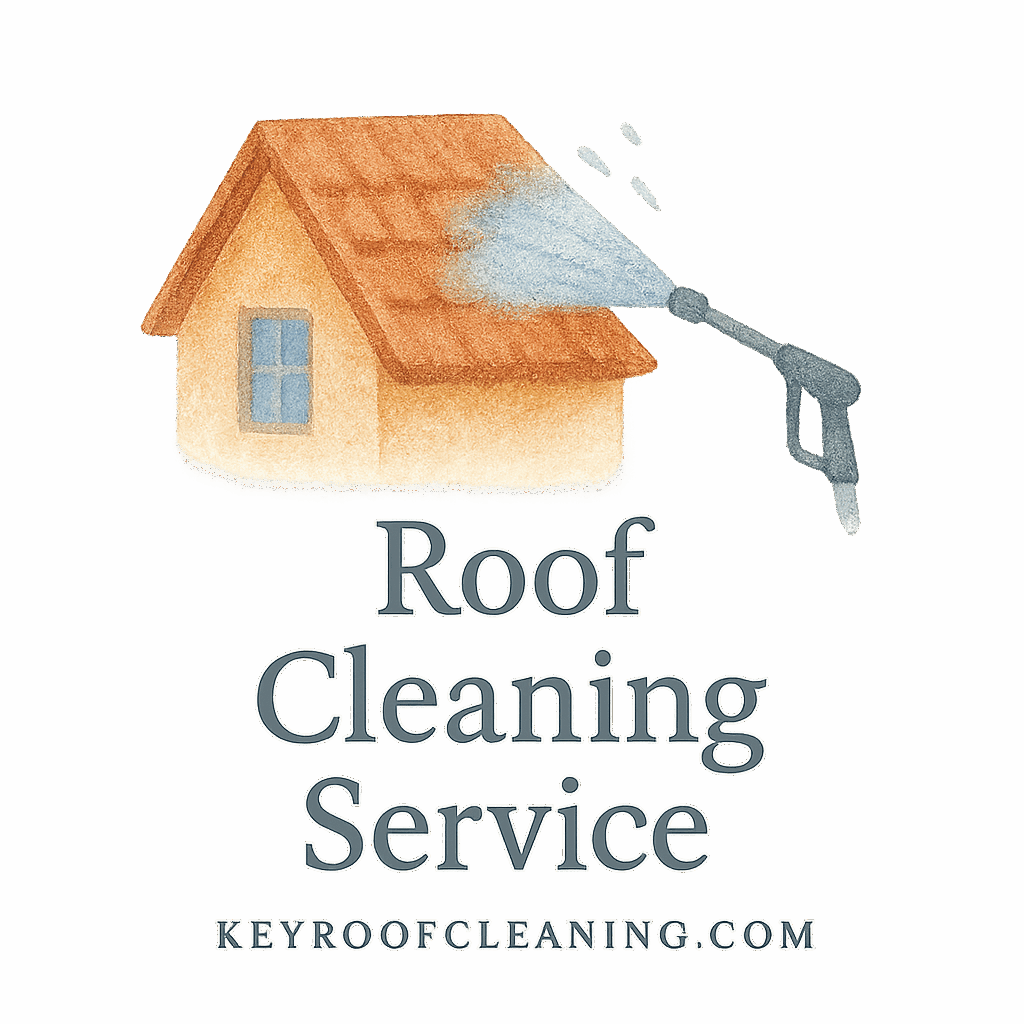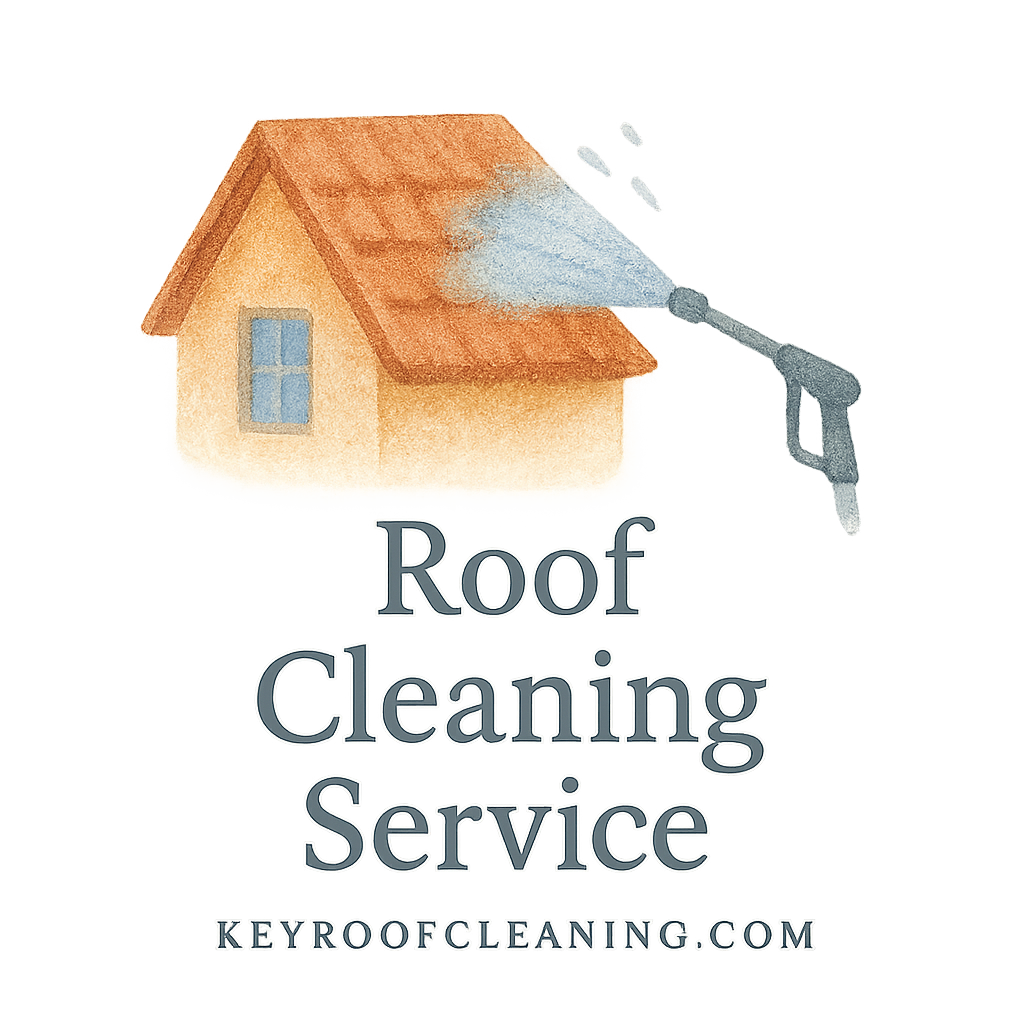Introduction
Roof cleaning isn’t just about boosting curb appeal—it’s about protecting your home from long-term damage. But here’s the catch: using the wrong chemicals (or even the right ones incorrectly) can damage your roof, harm the environment, or even put your health at risk.
That’s why in this guide, we’re diving deep into 7 roof cleaning chemicals you should use safely, with practical tips, product insights, and essential safety precautions.
Let’s scrub away the grime—safely!
Why Roof Cleaning Chemicals Matter
The Role of Chemicals in Roof Maintenance
The right chemical cleaner can remove tough stains like mold, algae, moss, and lichen. Over time, these organisms can eat into your shingles, cause leaks, and even reduce the lifespan of your roof. Learn more about the basics of roof cleaning here.
Risks of Improper Use
While chemicals are effective, misuse can discolor roofing materials, corrode gutters, or affect your landscape. There’s also the matter of personal safety—without proper precautions, you’re risking chemical burns and toxic inhalation.
For safety-first tips, don’t miss our section on maintenance and safety.
Understanding Roof Cleaning Safety
Protective Gear and Setup
Before you even pop open that chemical bottle, make sure you’re geared up.
Gloves, Masks, and Goggles
Use chemical-resistant gloves, a respirator or mask, and safety goggles. You don’t want splashes of sodium hypochlorite or bleach near your eyes.
Ventilation and Environment Considerations
Open areas are your best friend when cleaning. Avoid windy days and keep pets and kids indoors. Always check the label for any OSHA compliance warnings.
7 Roof Cleaning Chemicals You Should Use Safely
1. Sodium Hypochlorite
This is the heavy-hitter—commonly known as household bleach, it’s a powerful oxidizer used in many commercial roof cleaning solutions.
Pros, Cons, and Safety Tips
- Pros: Highly effective against black algae.
- Cons: Corrosive to metals and harmful to plants.
- Safety Tip: Always dilute and rinse plants and gutters afterward. Use only on roofs that can handle chemical exposure.
Pair this method with correct roof cleaning techniques for best results.
2. Sodium Percarbonate
This eco-friendly cleaner is a great alternative to bleach. It’s essentially solid hydrogen peroxide mixed with soda ash.
Environmentally Friendly and Powerful
- Pros: Breaks down into oxygen and water—safe for plants and pets.
- Cons: Works slower than bleach.
- Safety Tip: Still wear gloves and eye protection—it’s mild but not harmless.
For eco-friendly cleaning enthusiasts, this one’s a winner.
3. Bleach (Chlorine Bleach)
A staple in roof cleaning, but needs careful handling.
Use With Caution
- Pros: Great for killing mildew and mold.
- Cons: Can degrade shingles if overused.
- Safety Tip: Avoid prolonged exposure. Always rinse the area thoroughly.

4. Ammonium Compounds
Used in many commercial roof cleaning products due to their ability to cut through grime.
Effective Against Stains, But Hazardous
- Pros: Good against mildew and biological stains.
- Cons: Toxic fumes if mixed with bleach.
- Safety Tip: Never mix with other chemicals, especially chlorine.
See more about safe solutions for rooftops.
5. Trisodium Phosphate (TSP)
Known for its industrial-strength cleaning.
Powerful Cleaner, But Needs Dilution
- Pros: Cuts through grease, mold, and mildew.
- Cons: Not biodegradable, may be restricted in some states.
- Safety Tip: Mix with care and rinse the roof thoroughly after use.
6. Eco-Friendly Biodegradable Solutions
Modern roof cleaning doesn’t need to be harsh. Many biodegradable cleaners are now available that are tough on grime but easy on the Earth.
Safe for the Environment and Roof
- Pros: Pet and plant safe, non-toxic runoff.
- Cons: Takes longer to see results.
- Safety Tip: Use consistently for best results.
Explore other green methods for sustainable living.
7. Commercial Roof Cleaning Products
Brands blend different chemicals for optimized performance.
Off-the-Shelf Blends with Balanced Formulas
- Pros: Pre-measured, user-friendly.
- Cons: Costlier than DIY options.
- Safety Tip: Always follow manufacturer instructions.
Use our tools and products guide to explore the best commercial cleaners.
Tips for Safe Application
Working with Pressure Washers
Avoid high-pressure on delicate materials like shingles. Combine low-pressure washers with the right chemicals to preserve roof life. Learn more about cleaning methods for a delicate roof.
When to Call a Professional
When in doubt, call in the experts. Especially if you’re unsure about chemical handling or roof stability. See our advice on hiring tips and why professional service might be worth the cost.
Chemical Use Based on Roof Type
Asphalt Shingles
Avoid harsh chemicals like straight bleach. Go for diluted or green methods.
Metal Roofs
Avoid corrosive agents like TSP or high concentrations of bleach.
Tile and Delicate Roofs
Use only gentle solutions and always apply with soft brushes or low-pressure sprays.
Environmental Impact and Sustainable Options
Importance of Eco-Friendly Roof Cleaning
Runoff from roof chemicals goes into storm drains. That means your cleaner can affect nearby water sources. Use sustainable solutions whenever possible.
Green Living and Roof Maintenance
Roof cleaning is part of green living. Choosing eco-friendly methods aligns with a sustainable lifestyle.
Conclusion
Your roof protects your entire home—don’t cut corners when it comes to cleaning it. Using the right roof cleaning chemicals safely can add years to your roof’s lifespan while also keeping your family, pets, and environment safe.
Whether you’re a DIY enthusiast or leaning toward professional help, always prioritize safety, effectiveness, and sustainability.
For more guides and maintenance tips, visit Key Roof Cleaning.
FAQs
1. Can I mix roof cleaning chemicals together?
No. Mixing chemicals like bleach and ammonia can create toxic gases. Always use one product at a time.
2. Is pressure washing safe for all roof types?
Not always. It’s safe on metal but risky on shingles or tiles. Use low-pressure or soft wash methods for delicate surfaces.
3. Are eco-friendly roof cleaners as effective?
Yes, especially for routine cleaning. They may take longer but are safer for the environment and your roof.
4. How often should I clean my roof?
Once a year is typically enough, but inspect regularly and clean sooner if you notice algae or moss.
5. What’s the safest chemical for asphalt shingles?
Sodium percarbonate or diluted biodegradable cleaners are best.
6. Do I need to wear protective gear even for eco cleaners?
Yes. Even natural cleaners can irritate your skin or eyes. Always wear gloves and goggles.
7. Should I hire a pro or DIY?
DIY is fine for small jobs, but for larger or multi-story homes, hiring a professional service is often safer and more effective.


